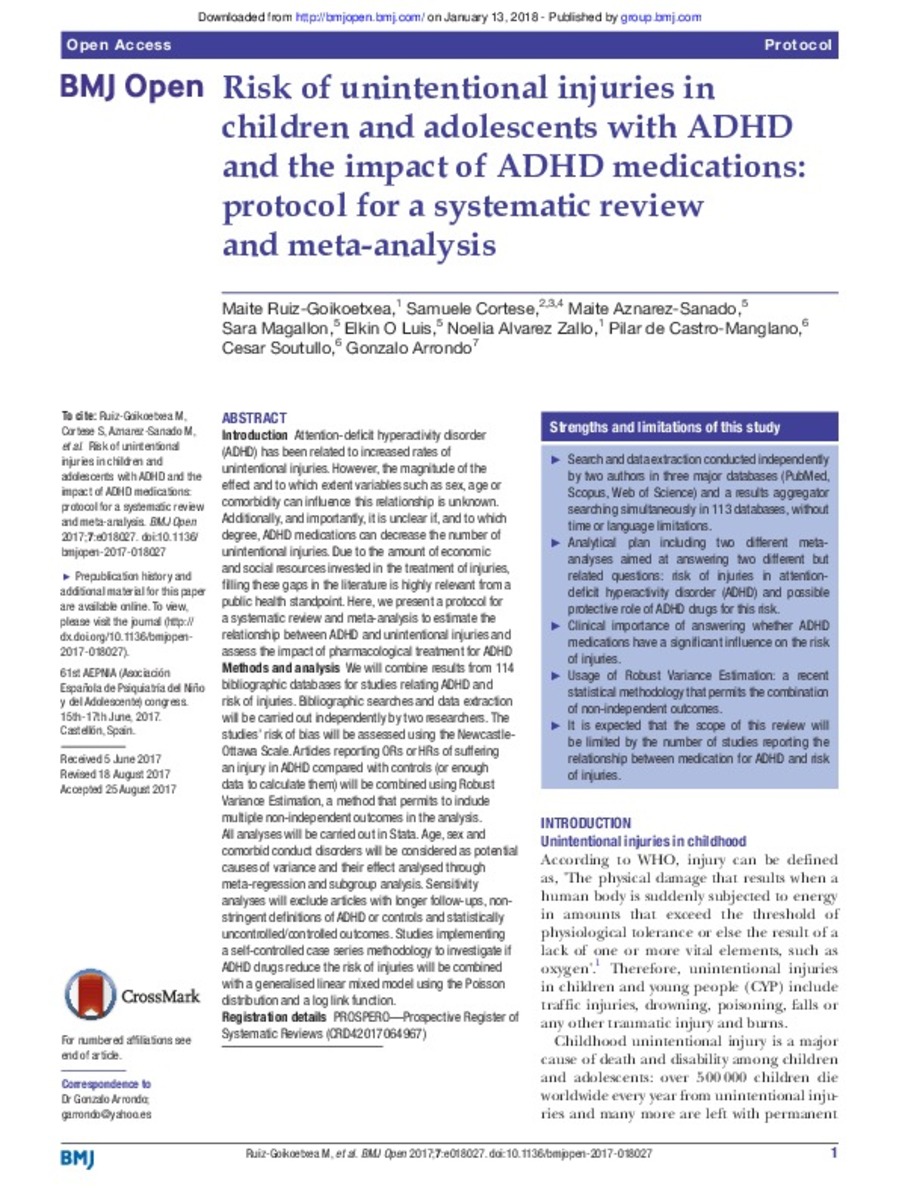Risk of unintentional injuries in children and adolescents with ADHD and the impact of ADHD medications: protocol for a systematic review and meta-analysis
Keywords:
Epidemiology
Materias Investigacion::Ciencias de la Salud::Salud pública
Publisher:
BMJ Publishing Group
Editorial note:
This is an Open Access article distributed in accordance with the Creative Commons Attribution Non Commercial (CC BY-NC 4.0) license, which permits others to distribute, remix, adapt, build upon this work non-commercially, and license their derivative works on different terms, provided the original work is properly cited and the use is non-commercial.
Citation:
Ruiz-Goikoetxea M, Cortese S, Aznarez-Sanado M, et al Risk of unintentional injuries in children and adolescents with ADHD and the impact of ADHD medications: protocol for a systematic review and meta-analysis BMJ Open 2017;7:e018027
Statistics and impact
0 citas en

0 citas en

Items in Dadun are protected by copyright, with all rights reserved, unless otherwise indicated.









